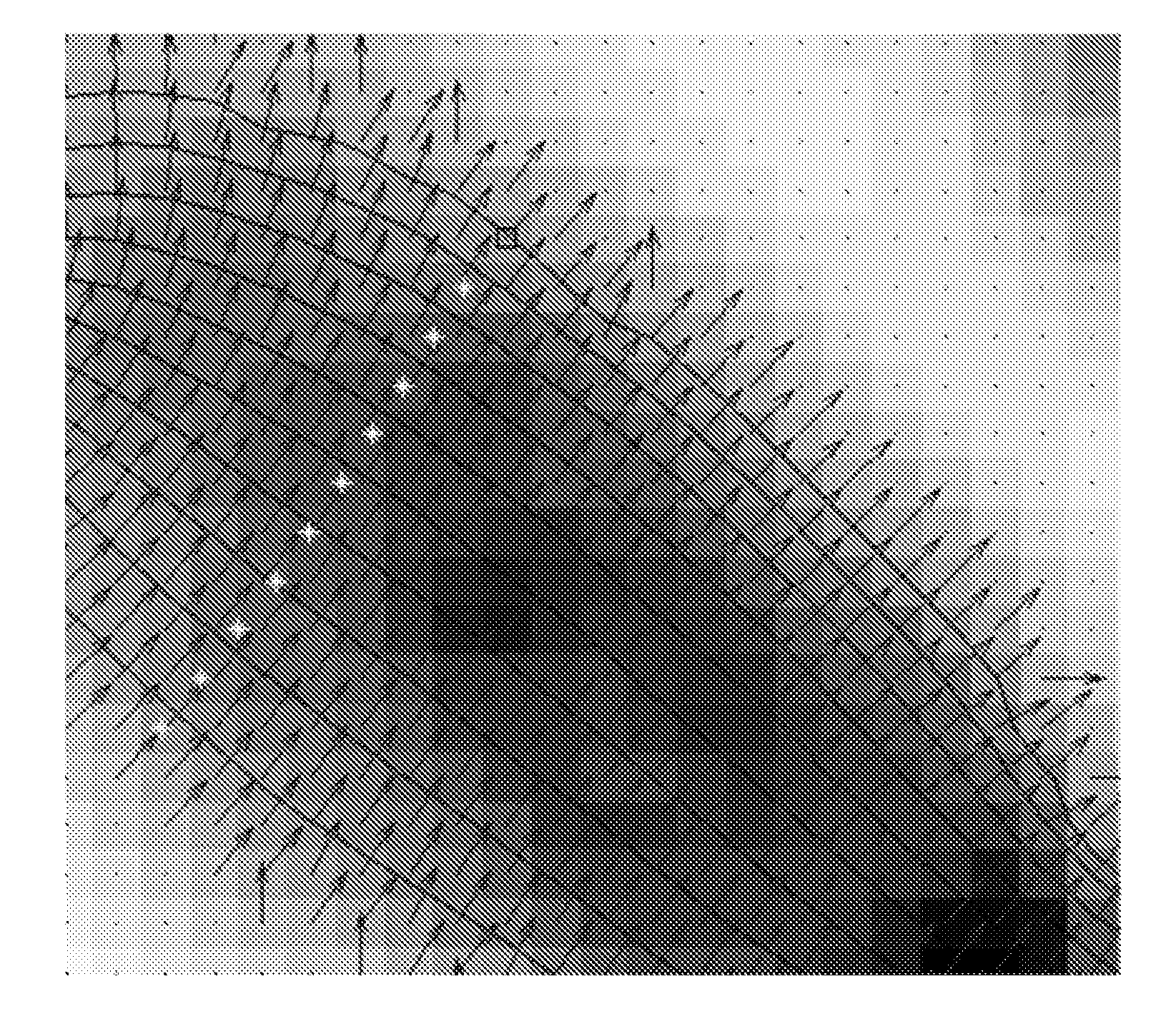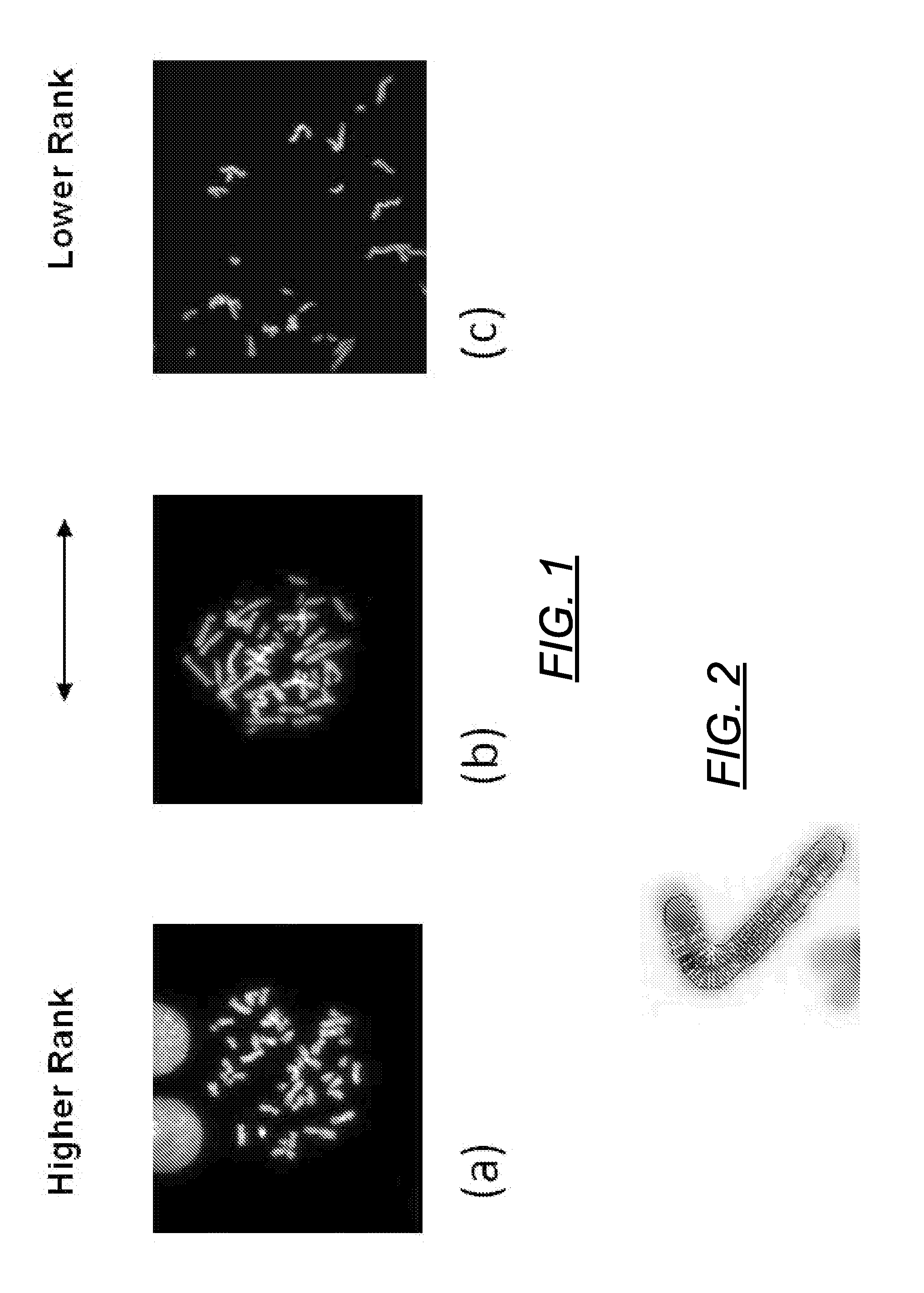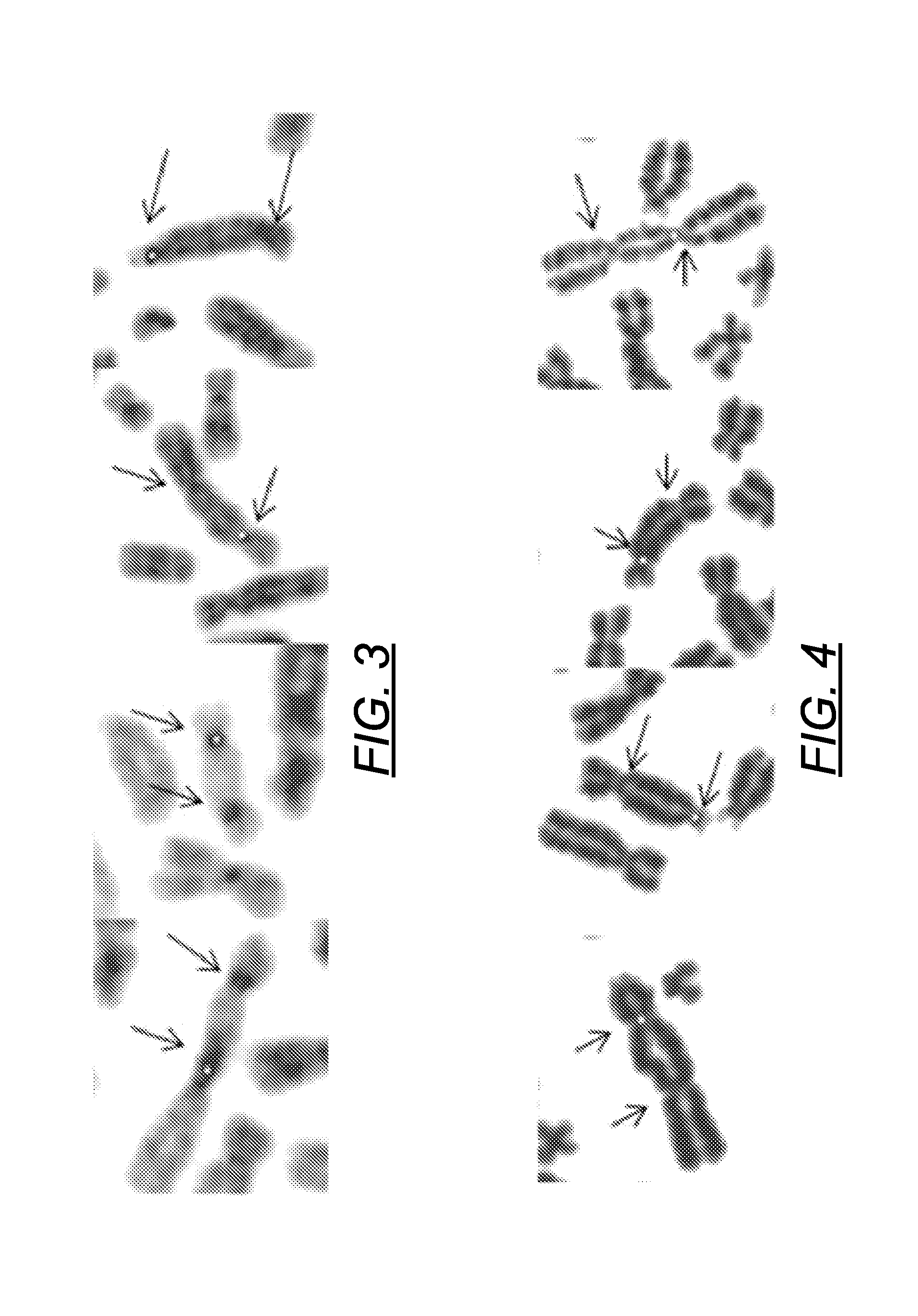Centromere Detector and Method for Determining Radiation Exposure From Chromosome Abnormalities
a technology of chromosome abnormalities and detectors, applied in the field of radiation exposure determination, can solve the problems of limiting the throughput of dcc assay, 50% misclassification of dcc, and obtaining accurate throughput, so as to facilitate better discrimination of dccs, improve the accuracy of centromere recognition, and improve the localization of centrifugal particles
- Summary
- Abstract
- Description
- Claims
- Application Information
AI Technical Summary
Benefits of technology
Problems solved by technology
Method used
Image
Examples
example 1
[0141]Automatic Detection of individual centromeres in normal chromosomes.
[0142]Cells from three different normal individuals were imaged by fluorescent microscopy after heat denaturing fixed metaphase chromosomes in 2×SSC, 50% formamide, 10% dextran sulfate solution and staining with DAPI (as described in J. Knoll and P. Lichter, Unit 4.3, Current Protocols in Human Genetics, Wiley NY, 1994, revised 2006). Grayscale images were obtained with a DAPI filter set using an Olympus BX61 microscope and Cytovision Software (Genetix Inc, San Joe, Calif.) and inverted. Denaturation enhances staining of centromeric and heterochromatic sequences (in contrast with single copy euchromatic domains) because of the preference of this dye for binding to double stranded NT rich DNA which reforms due to self-renaturation of tandem alphoid monomers in these regions. Digitally captured images were then inverted, and partial metaphase regions containing well separated chromosomes were segmented to obtain...
example 2
[0143]Results of centromere detection algorithm for dicentric detection. The algorithm was developed and tested on DAPI-stained irradiated metaphase chromosome images, and then adapted for FPG stained images. Metaphase spreads from cells were irradiated with 5 Gy of ionizing radiation by Dr. Ruth Wilkins (Health Canada; HC), then heat denatured, and stained with DAPI at Univ. Western Ontario (UWO). We then identified DCC manually and applied a modification of our published algorithm to detect centromeres (Subasinghe A et al. Canadian Conf. on Computer &Robot Vision, pp 223-230, DOI: 10.1109 / CRV.2010.36, 2010). After segmenting the chromosome and computing the centerline according to the method described infra, the software determines the centromere and the associated CCF values. The first centromere is then masked, and the process is repeated to find the second one. Typical examples of the two centromeres found by the algorithm are marked in FIGS. 3 and 4. Of 20 DCC, 17 (85%) have b...
PUM
| Property | Measurement | Unit |
|---|---|---|
| angle | aaaaa | aaaaa |
| size | aaaaa | aaaaa |
| width | aaaaa | aaaaa |
Abstract
Description
Claims
Application Information
 Login to View More
Login to View More - R&D
- Intellectual Property
- Life Sciences
- Materials
- Tech Scout
- Unparalleled Data Quality
- Higher Quality Content
- 60% Fewer Hallucinations
Browse by: Latest US Patents, China's latest patents, Technical Efficacy Thesaurus, Application Domain, Technology Topic, Popular Technical Reports.
© 2025 PatSnap. All rights reserved.Legal|Privacy policy|Modern Slavery Act Transparency Statement|Sitemap|About US| Contact US: help@patsnap.com



